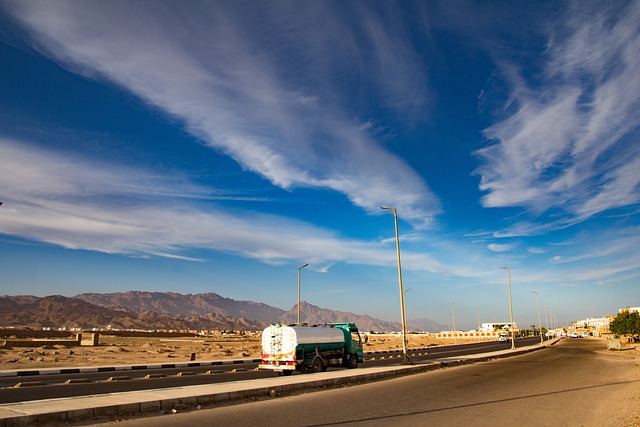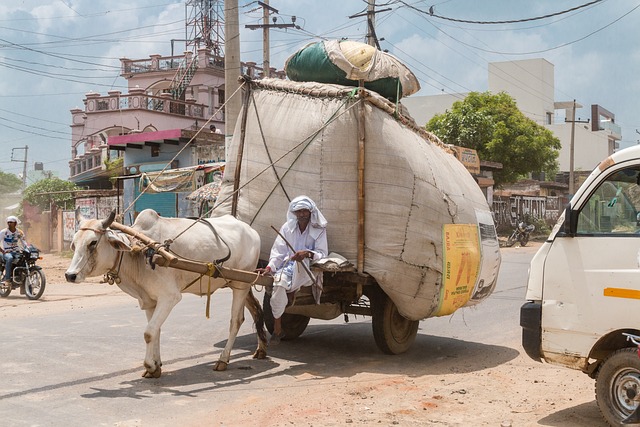Cargo insurance startups revolutionize vehicle protection with specialized physical damage policies, covering external and internal components from accidents and natural disasters. These policies offer add-ons like rental car coverage and vandalism protection. Using advanced technology, they streamline claims processes, provide real-time shipment tracking, and protect businesses and drivers against financial risks. Understanding policy inclusions and exclusions is crucial for effective claim navigation, which involves gathering evidence and promptly notifying the insurer within stipulated timeframes.
In today’s world, protecting your vehicle from physical damage is more crucial than ever. Understanding physical damage policies tailored for vehicles can offer peace of mind on the road. This comprehensive guide explores the evolving landscape of vehicle protection, with a focus on the rising influence of cargo insurance startups. We delve into key coverage areas, dispel myths, and provide a step-by-step claims navigation guide to ensure you’re protected, no matter the journey ahead.
Understanding Physical Damage Policies for Vehicles

Physical damage policies are designed to protect vehicle owners from unexpected and costly repairs due to accidents or natural disasters. These policies, often offered by cargo insurance startups, cover a wide range of incidents, including collisions, floods, and even theft. By understanding what is included in such policies, drivers can ensure they’re adequately protected on the road.
Physical damage coverage typically includes repairs or replacement of both external and internal vehicle components. This can extend to structural damages like bent frames, cracked windshields, and damaged bodies, as well as interior components affected by water damage from a flooded area. Many cargo insurance startups also offer optional add-ons for specific concerns, such as rental car coverage during repairs or protection against vandalism.
The Role of Cargo Insurance Startups in Vehicle Protection

In today’s digital era, cargo insurance startups are playing a pivotal role in revolutionizing vehicle protection. These innovative companies offer specialized policies designed to cover physical damage, providing an essential safety net for businesses transporting goods. By leveraging advanced technologies and data analytics, they can assess risks more accurately and tailor coverage options to meet specific needs. This level of customization ensures that vehicles and their valuable cargo are adequately protected during transit.
Moreover, cargo insurance startups enhance the overall experience for both businesses and drivers. They streamline the claims process, making it faster and more efficient, which is crucial in time-sensitive logistics operations. Their digital platforms also enable real-time tracking and monitoring of shipments, allowing stakeholders to stay informed about their goods’ whereabouts. This proactive approach to vehicle protection not only mitigates financial risks but also fosters trust among all parties involved in the supply chain.
Key Coverage Areas: What's Included and Excluded?

Physical damage policies offer crucial coverage for various aspects of vehicle ownership, ensuring that unexpected incidents don’t lead to significant financial burdens. When it comes to key coverage areas, these policies typically include protection against damage caused by accidents, natural disasters like storms or floods, and even certain types of theft. However, not all damages are covered; policy exclusions may include wear and tear, mechanical failures, or damage intentionally caused by the policyholder.
For business owners with cargo insurance startups, understanding these inclusions and exclusions is vital. These policies often extend coverage to protect goods in transit, ensuring that any loss or damage incurred during transportation is compensated. However, specific circumstances like cargo being left unsecured or exposed to elements might not be covered, emphasizing the importance of careful loading and secure packaging practices for business operations.
Navigating Claims: A Step-by-Step Guide for Policyholders

Navigating Claims: A Simple Guide for Policyholders
The first step in ensuring your vehicle damage is covered is to understand your physical damage policy. Cargo insurance startups often offer comprehensive plans that include detailed procedures for filing claims. Begin by gathering all necessary information related to the incident, such as photographs of the damaged vehicle and any supporting documents from witnesses or law enforcement.
Next, contact your insurance provider promptly to report the claim. Most policies require you to notify them within a specific timeframe after the damage occurs. Follow their instructions carefully, providing all requested details and documentation. Your insurer will guide you through the rest of the process, including arranging for repairs or replacements, and ensuring that your coverage limits are met.
Physical damage policies play a pivotal role in safeguarding vehicles from unforeseen mishaps. By understanding these policies and leveraging the innovative solutions offered by cargo insurance startups, vehicle owners can gain comprehensive protection. These startups are revolutionizing the industry by providing tailored coverage options, ensuring peace of mind on the road. With a clear grasp of key coverage areas and a streamlined claims process, policyholders can navigate potential damages effectively. This concludes our exploration of essential aspects related to vehicle protection, emphasizing the importance of informed decisions for secure travel.
